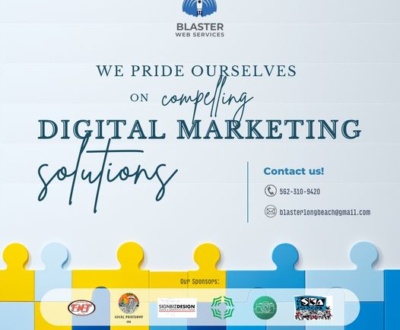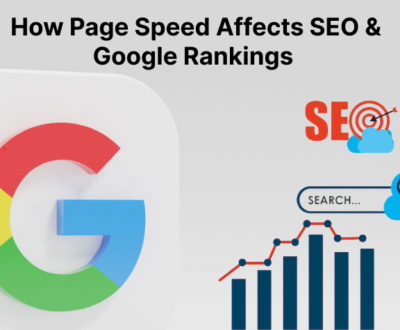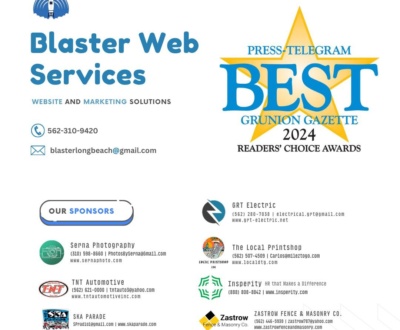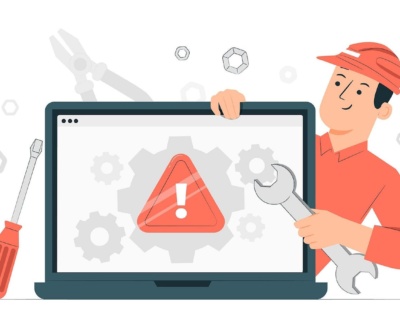HOW DO YOU START AN EMAIL MARKETING CAMPAIGN THAT ACTUALLY WORKS?
- October 7, 2023
- Blaster Web Services Blog, Online Marketing
Email. It’s the first thing you check when you sit down at your computer at the office and it’s the first thing you look at when you get home.
We’ve gotten conditioned to check our email not just daily, if not hourly (thank you very much for the constant alerts on my phone) thinking we’ll miss an important message or lose out on the best limited-time offer ever.
As excited as we are to see a new email message from one of our contacts, it can quickly become a nuisance and a not-so-fun task wading through the hundred or so emails we get each day from a variety of sources, most of which are fighting over our dollars and bank account.
Email marketing has become a staple tactic in every marketer’s playbook, and as annoying as those pesky sales emails are, they are highly effective and efficient.
If you’re new to email marketing or have assumed that it isn’t effective, now is the time to get started. Here is how:
Mind Your Manners
People are bombarded with advertisements and interruptions every day, including email. They have to set aside precious minutes out of their life to go through all the emails and hopefully stop to read yours.
The first key to a successful email marketing strategy is to compose emails that catch the eyes of your recipients by setting yourself apart from the many other emails he or she receives on any given day.
Remember, at this point, your potential customers aren’t looking for something to read. They’re looking for things to delete.
Your emails need to get their attention, but they shouldn’t be obnoxious. Personalized emails that are sent in alignment with the customer’s timing preferences seem to perform the best.
When you send an email, after all, you are, in a way, entering their home and world.
When launching an email campaign, be considerate of how you word your email and the timing and frequency in which you send emails.
Build Up a Healthy Email List
A strong and successful email campaign needs a sizeable email list to get started. There is no magical method for doing this, though, and different companies will have their own strategies for building up their lists.
The most common methods include giving something away for free and offering a newsletter or company updates on products. The purpose of these efforts is to offer something of value for the low, low price of a name and email address.
Your call to action and the purpose of the emails need to be strong, compelling, and clear. You need to be careful about how you word your email.
It can be helpful to get inside the heads of your recipients by coming up with questions they will likely consider, including:
- What do I get when I give you my email address?
- Are you going to spam me?
- How often will you email me?
- Will I get discounts?
- Will I get a first crack at your beta?
- Will you send me relevant offers or more junk?
Your “ask” needs to be compelling and incentivizing. Avoid the generic, bland “enter your email for updates.”
You can also look at your own inbox and see what types of offers you subscribe to and figure out what compels you to click on certain emails and not others.
Use a Reputable Email Service
When you use a reputable, well-known email service, you increase your chances of recipients opening, clicking, and converting through your emails. This is because these email services help you send emails that look professional and interesting. This builds trust between your brand and the recipient.
Some reputable email services you could consider include: (Please note: we are not endorsing any one of these in particular, just highlighting some of the known players in the field.)
- Aweber
- Mailchimp
- Constant Contact
- Campaign Monitor
- What counts
- Emma
Manage Your Follow-Up Efforts
An email marketing campaign is founded on expectations. Your campaign will fail if you send out emails every day when you promised to only send once a week. If a subscriber expects daily product update emails, but you only send out emails weekly or monthly, your subscriber will get angry and your campaign will likely fail.
You may be apprehensive about follow-up emails because you don’t want to send emails out too frequently.
Follow-up emails, however, are an essential aspect of a successful email marketing campaign. If you don’t send a follow-up email, your customers are likely to forget their interaction with your brand and you’ll go back to square one again.
Follow-up emails are great opportunities to utilize the autoresponder feature on your chosen email service provider. You’ll be able to adjust the frequency and text of the autoresponder based on the feedback you get from customers.
What’s in a Newsletter
You may already have a newsletter as part of your email campaign, but not all newsletters are equal. Customers want newsletters that look professional, are easy to read, have a mix of graphics and text, and can be easily opened and rendered on smartphones.
Some companies misuse their newsletters and use them more as a pitching tool rather than a relationship-building tool. The content, therefore, will suffer. Newsletters targeted for pitching will come across as spammy and sales, which is often a major turn-off.
A strong email newsletter will include a mix of product updates and images, industry and company insights, new content as well as a personal message. Quality newsletters are emailed to customers who opted into the subscription, not those who expressed no interest.
Use Analytics to Make Improvements
If the results of your email campaign aren’t as stellar as you wanted or anticipated, there is something you’re not doing right. Instead of canning the whole campaign and starting from scratch, it is way more efficient and cost-effective to use analytics to diagnose specifically where the problem is.
The three main analytics to pay careful attention to are the open rate, click-through rate, and number of unsubscribers.
A low open rate indicates that recipients do not even bother to open their emails and delete them upon receipt. This indicates that your emails are too spammy, sent too frequently or the recipient perceives your brand as providing little value.
Try customizing your email, having an attention-grabbing headline, and improving the copy in the email to address this problem.
A low click-through rate (CTR) indicates the recipient clicks on the email, but then abandons the destination webpage. This may indicate that the copy on the destination page isn’t targeted enough, or that the call to action is too obscure.
A high unsubscribe rate indicates that people don’t trust your brand. You’ll need to work on upping your brand’s reputation and building trust with your customers.
You can use analytics to see how recipients respond to certain autoresponders and marketing messages and then make necessary improvements.
Segmentation
An email marketing campaign is just like any other type of marketing campaign, in which your targeted audience will be diverse and have multiple subgroups. For these subgroups, buyer personas are formulated to characterize the personality, interests buying behavior, and thought process of the ideal person within each group.
People in each subgroup will have different characteristics than those of other subgroups. Defining your buyer personas is a way to segment and tailor your marketing messaging and tactics to speak to each subgroup in a way that will increase the likelihood of conversion.
Segmentation is useful in email marketing as well. To keep your emails from automatically going into the recipient’s spam folder, your emails need to be personal and address a specific need he or she has that your product or service can solve. Segmenting buyer personas can help you identify the specific needs of each group within your targeted audience.
Your email’s messaging should also meet the recipient where they’re at in the buying process.
Some recipients may never have heard of your brand so you want to provide them with more detail and possibly give them a free resource when they sign up for a newsletter. Others have been loyal customers for years and you can further deepen the relationship by rewarding them with coupons or discounts on products.
The appropriate messaging will more likely compel the recipient to take the desired action and move forward along the conversion funnel.
An example of how you might segment your email campaign may include:
- Customer List
- Lead List
- Product Updates List
- Newsletter List
- Daily, Weekly, Bi-monthly, and Monthly Email List
An email campaign is a great way to get in touch with current and potential clients and build crucial relationships with them.
Company/customer relationships are even more critical now than ever with the Internet and mobile phones.
An email campaign takes work and pre-planning. If they aren’t done right, they can severely backfire. If done well, email campaigns can increase trust with customers and lead to greater conversions and loyal customers.
Email marketing and social media marketing may have more in common than you think.
About us and this blog
We are a digital marketing company with a focus on helping our customers achieve great results across several key areas.
Request a free quote
We offer professional SEO services that help websites increase their organic search score drastically in order to compete for the highest rankings even when it comes to highly competitive keywords.
Subscribe to our newsletter!
More from our blog
See all postsRecent Posts
- Website As A Source Of Marketing April 22, 2024
- Ready to elevate your online presence? April 17, 2024
- How a Digital Marketing Agency Drives Business Growth? April 16, 2024








